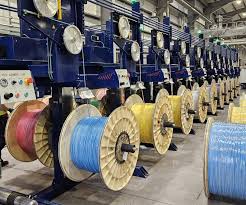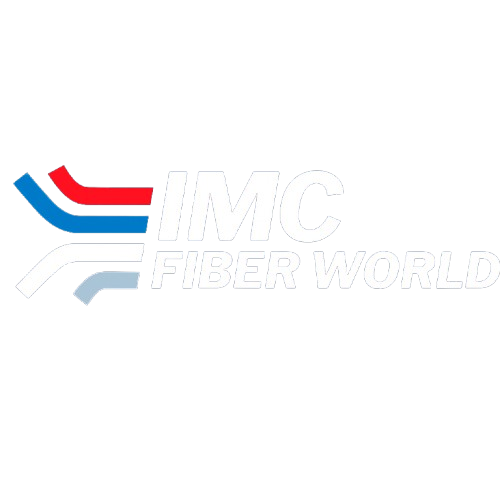As the demand for faster internet, cloud computing, and secure data transfer increases, businesses and service providers are rethinking their network infrastructure. One of the most significant upgrades you can make is switching from traditional copper cables to fiber optic cables.
Fiber optic technology offers numerous advantages in speed, distance, durability, and scalability. In this article, we break down the top 10 reasons why making the switch from copper to fiber is a smart long-term investment for any modern network.
- Faster Data Transmission
Fiber optic cables transmit data at the speed of light. While copper cables rely on electrical signals and typically top out at 1 Gbps over short distances, fiber supports much higher speeds—up to 100 Gbps and beyond.
This increased speed is critical for:
Streaming HD/4K video
Cloud-based applications
Online gaming
Video conferencing
Real-time data analytics

In fiber vs copper speed comparisons, fiber is the clear winner.
- Greater Bandwidth Capacity
Fiber cables offer significantly higher bandwidth than copper. They can carry more data simultaneously without signal interference or congestion. This means:
No lag during peak usage hours
Consistent performance across multiple devices
Better user experience for customers and employees
For growing businesses and ISPs, fiber’s bandwidth capacity is essential.
- Longer Transmission Distances
Copper cables are limited to about 100 meters (328 feet) before needing signal boosters. Fiber optic cables, however, can carry signals over tens of kilometers without quality loss.
This makes fiber ideal for:
Campus networks
Industrial parks
Long-haul telecom
FTTH (Fiber to the Home) deployments
The longer the distance, the greater the advantage of fiber over copper.
- Superior Signal Quality and Integrity
Copper cables suffer from electromagnetic interference (EMI), signal attenuation, and crosstalk. These issues can degrade network quality and cause data loss.
Fiber optic cables, on the other hand, are immune to EMI and offer consistent signal integrity—even in electrically noisy environments like factories, airports, or dense urban areas.
- Enhanced Security
Fiber optics are far more secure than copper. Tapping into a fiber optic line without being detected is extremely difficult, making it the preferred choice for:
Financial institutions
Government agencies
Healthcare providers
Enterprises with sensitive data
Additionally, fiber doesn’t emit signals that can be intercepted, unlike copper.
- Future-Proof Infrastructure
As new technologies like 8K streaming, IoT, AI, and 5G become mainstream, data demands will skyrocket. Fiber optic networks are designed to handle these future needs.
Installing fiber now means:
Avoiding costly upgrades later
Supporting next-gen applications
Staying competitive in the digital era
Fiber offers a longer lifecycle than copper, reducing total cost of ownership over time.
- Lighter and More Durable
Fiber cables are thinner and lighter than copper, making them easier to install and manage. Despite their lightness, fiber cables are incredibly strong and resistant to environmental factors like:
Water and moisture
Temperature changes
Chemicals
Corrosion
This durability is especially important in outdoor or industrial installations.
- Reduced Latency
Latency is the delay before data begins to transfer. Fiber significantly reduces latency compared to copper, improving performance in:
Video conferencing
VoIP calls
Real-time trading platforms
Online gaming
Low latency is a major advantage in today’s time-sensitive digital world.
- Lower Long-Term Costs
Although fiber has a higher initial installation cost, it offers better long-term value due to:
Lower maintenance requirements
Longer cable lifespan
Fewer repeaters needed for long distances
Reduced energy consumption
Copper networks require frequent upgrades and repairs, leading to higher ongoing expenses.
- Increased Property and Business Value
Installing a fiber-ready network infrastructure can boost the value of your commercial or residential property. It’s also a major selling point for:
Tech companies
Data centers
Co-working spaces
Smart buildings
Customers and tenants increasingly expect fast, reliable internet as a standard feature.
Common Myths About Fiber vs. Copper
Let’s debunk a few misconceptions:
Myth: Fiber is too fragile.
Fact: Fiber is highly durable and often stronger than copper in many applications.
Myth: Fiber is only for large businesses.
Fact: Small businesses and even home users benefit from fiber’s speed and reliability.
Myth: Fiber is too expensive.
Fact: Costs have dropped significantly, and long-term savings outweigh the upfront cost.
Where Fiber Makes the Most Impact
Fiber optic cables are being adopted across multiple sectors:
Telecommunications: ISPs replacing old copper networks
Healthcare: Transferring large medical imaging files
Education: Supporting e-learning platforms
Retail: Powering digital displays and POS systems
Manufacturing: Connecting industrial IoT devices
Wherever data needs to move fast and securely, fiber outperforms copper.
Upgrade with [Company Name]
At [Company Name], we provide premium-grade fiber optic cables to replace outdated copper infrastructure. Our offerings include:
Single‑mode and multi‑mode fiber cables
Armored and non-armored variants
Custom lengths and connector options
Technical guidance for installation and migration
We help organizations transition to fiber smoothly—on time and on budget.
Ready to Switch from Copper to Fiber?
Whether you’re planning a small upgrade or a full infrastructure overhaul, our experts are here to support you every step of the way.
📞 Call us at [Phone Number]
📧 Email: [Email Address]
🌐 Learn more: [Company Website]
Experience faster, cleaner, and more powerful connectivity—fiber is the future.
